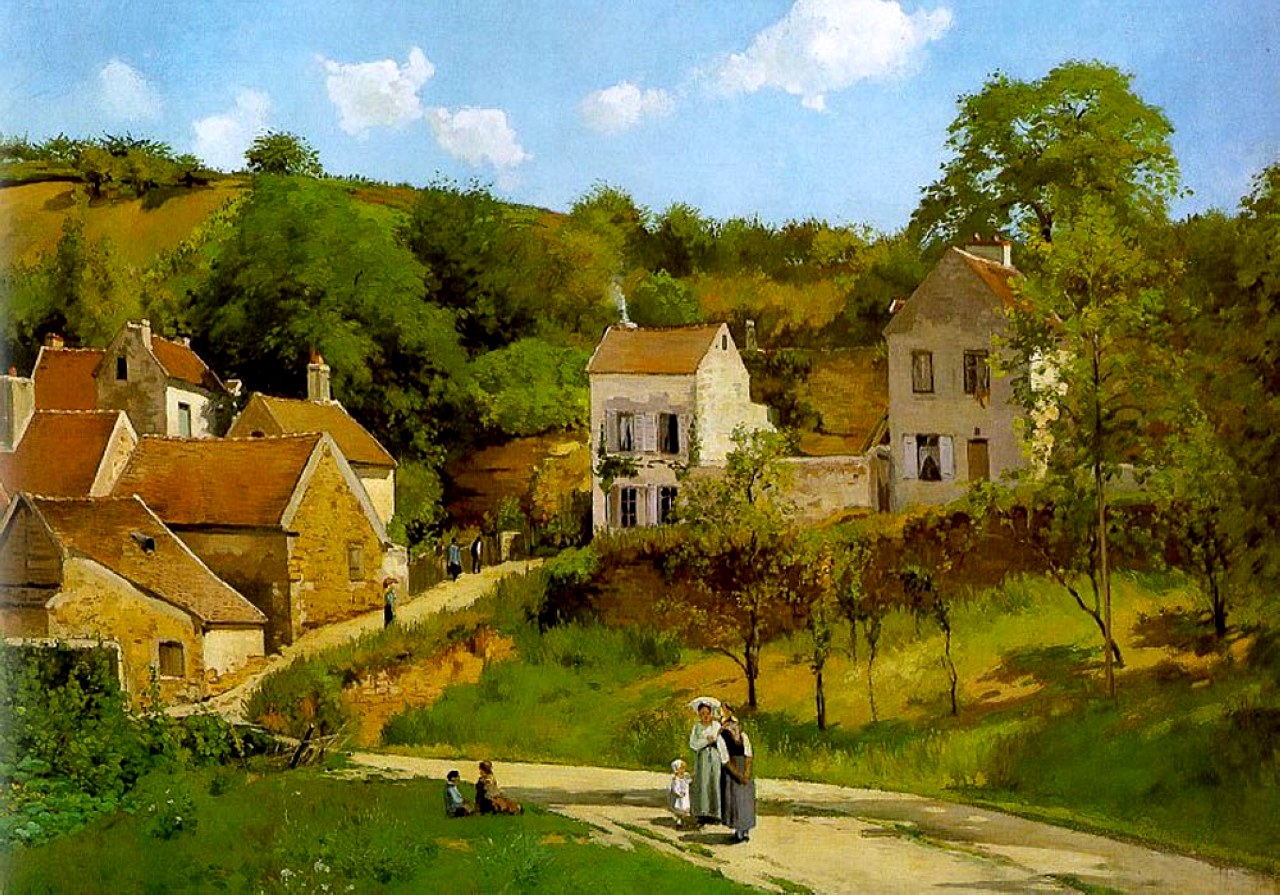impressionist-ART.com
Impressionism & Post-Impressionism
Camille Pissarro - L'Hermitage at Pontoise 1867 L'Hermitage at Pontoise |
Mary Cassatt 1844–1926. American painter and printmaker who was part of the group of Impressionists working in and around Paris. She took as her subjects almost exclusively women and children. ArtsViewer.com |
From The Solomon R. Guggenheim Foundation:
The view represented here is a winding village path at the base of a cluster of houses in Pontoise, France, known as the Hermitage. Camille Pissarro lived there on and off between 1866 and 1883, choosing the rural environs of the provincial capital for a series of large-scale landscapes that have been called his early masterpieces. Pissarro’s idyll, replete with villagers and neatly tended gardens, is more than just the naturalist painter’s attention to perceived reality. It is a continuation of the French academic landscape tradition, which stretched from the allegories of Poussin to the proto-Cubist landscapes of Paul Cézanne, who studied and worked with Pissarro.
Pissarro stripped his painting of the historical or sentimental over-tones that characterized the landscapes of his immediate predecessors. And he made magisterial use of light and dark, demonstrating more than a mere interest in the effects of sun and shade. As art theorist Charles Blanc wrote at the time, this type of articulation was meant “not simply to give relief to the forms, but to correspond to the sentiment that the painter wishes to express, conforming to the conventions of a moral beauty as much as to the laws of natural truth.”
The painterly conventions that Pissarro utilized in The Hermitage were established by Gustave Courbet, Edouard Manet, and the Barbizon school, but the painting is also a product of its era. In the same year that Marx published Das Kapital, Pissarro elected to depict a class of people that many critics considered a vulgar choice for the subject of a painting. Pissarro’s later socialist sympathies aside, his work avoided the confines of traditional academic painting, which was centered on scenes far removed from the real world he hoped to describe. The Hermitage, however realistic an arcadian scene it appears to be, belongs to Pissarro’s seemingly unfulfilled quest for a truthful manner of depiction. Shortly afterward he abandoned this Realist style for a looser brush and the atmospheric effects for which he is popularly known, the trademarks of Impressionism.
Cornelia Lauf